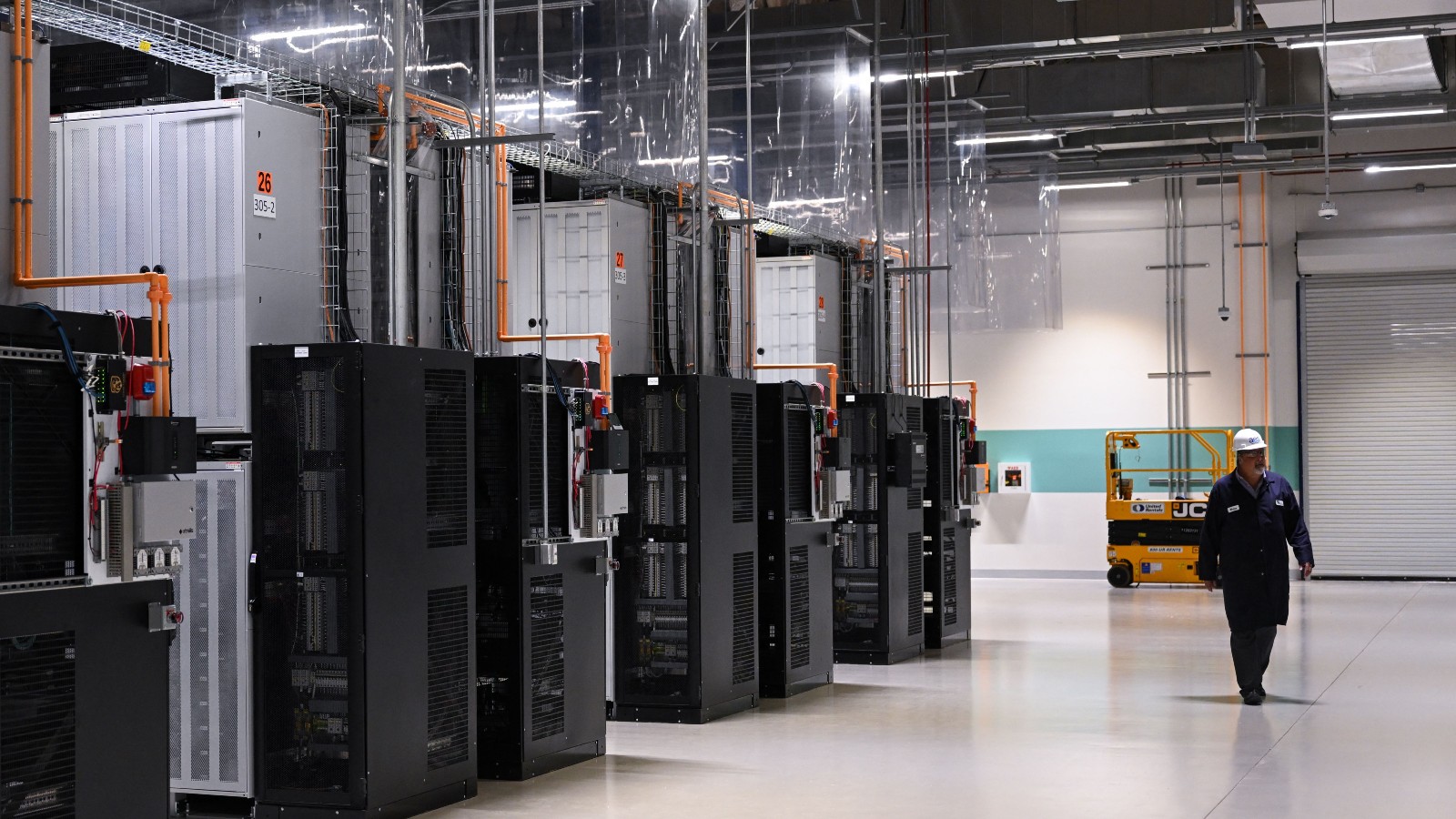This story was originally published by Canary Media.
For years, grid batteries couldn’t get much respect from the U.S. electricity sector. But this summer, the up-and-coming clean energy technology notched several big wins that signaled its arrival as a serious player in the industry.
Battery developers built more new grid-storage capacity in the second quarter of 2023 than in any previous quarter, according to newly tabulated data from the American Clean Power industry group and research partner Wood Mackenzie. That constituted a return to form for the industry after two quarters of declining installations hindered by lingering Covid-related supply-chain constraints.
Those new installations, heavily concentrated in California and Texas, meant more batteries than ever were online this summer to help the grid survive a gauntlet of seemingly unending heat waves and weather-related emergencies. No less than The Wall Street Journal lauded the technology’s role in avoiding blackouts in Texas, a state that set 10 different records for electricity demand this summer. Texas grid battery capacity surged from 275 megawatts in 2020 to 3,500 megawatts as of this summer, per a Texas Tribune article — meaning the fleet grew 13 times larger in just three years.
California, which helped kick off the modern era of grid batteries a decade ago by mandating that utilities install them, enlarged its grid battery capacity by a factor of 10 in just the last three years. Batteries now make up 7.6 percent of the nameplate capacity for the power system overseen by the California Independent System Operator, reinforcing the grid in the crucial evening hours when solar production fades.
But the summer headlines weren’t all positive — New York state cooked up the wrong kind of Hot Battery Summer when three different storage plants caught fire in the course of two months, drawing higher levels of scrutiny from storage enthusiast Governor Kathy Hochul. Those three projects, which dropped offline for repairs and investigations, proved to be outliers in a national battery fleet that otherwise spent the summer doing exactly what it was supposed to do: keeping the grid humming along.
The clichéd understanding of grid batteries is that they store clean energy to supply the grid when the sun isn’t shining and the wind isn’t blowing. The reality is a little more complicated.
Some battery plants charge directly from solar panels, an arrangement that allowed battery developers to tap into the federal solar tax credit before Congress authorized a similar credit for stand-alone energy storage in the Inflation Reduction Act. Now, bolstered by that incentive, a growing array of stand-alone batteries charge from the grid, which constantly fluctuates in carbon-intensity. In the solar-rich regions where most of the U.S.’ grid battery fleet is concentrated, economics line up nicely with climate imperatives: Profit-seeking battery owners have every reason to charge up when surplus solar generation drives prices down, and then sell power back to the grid in the expensive, largely fossil-fueled hours of peak electricity demand.
Right now, the volume of electricity stored in batteries and returned to the grid in California and Texas is just a drop in the bucket of those states’ ample consumption. But the value batteries provide isn’t so much from bulk-shifting clean energy; it’s in delivering bursts of power at key moments with lightning-fast response times. Battles with grid outages, much like modern presidential elections, are won or lost on the margins. The few thousand megawatts that batteries can instantly contribute to those states in moments of crisis spell the difference between rolling blackouts and a control room full of sweaty but relieved grid operators.
In terms of the transition to clean energy, this means that batteries are taking on more of the role served by fossil-gas peaker plants, which don’t run all the time but fire up for several hours at a time in response to high demand. Lithium-ion batteries today can only keep up their full-strength discharge for a few hours; that’s why numerous startups and the Department of Energy are pushing to commercialize long-duration storage technologies.
If those newer technologies radically reduce the cost of storing electricity, they could shift clean energy en masse into hours when the grid is dirtier. But until then, batteries have proven they can help the electrical system with critical reliability problems it faces today, while nudging it in a cleaner direction.



